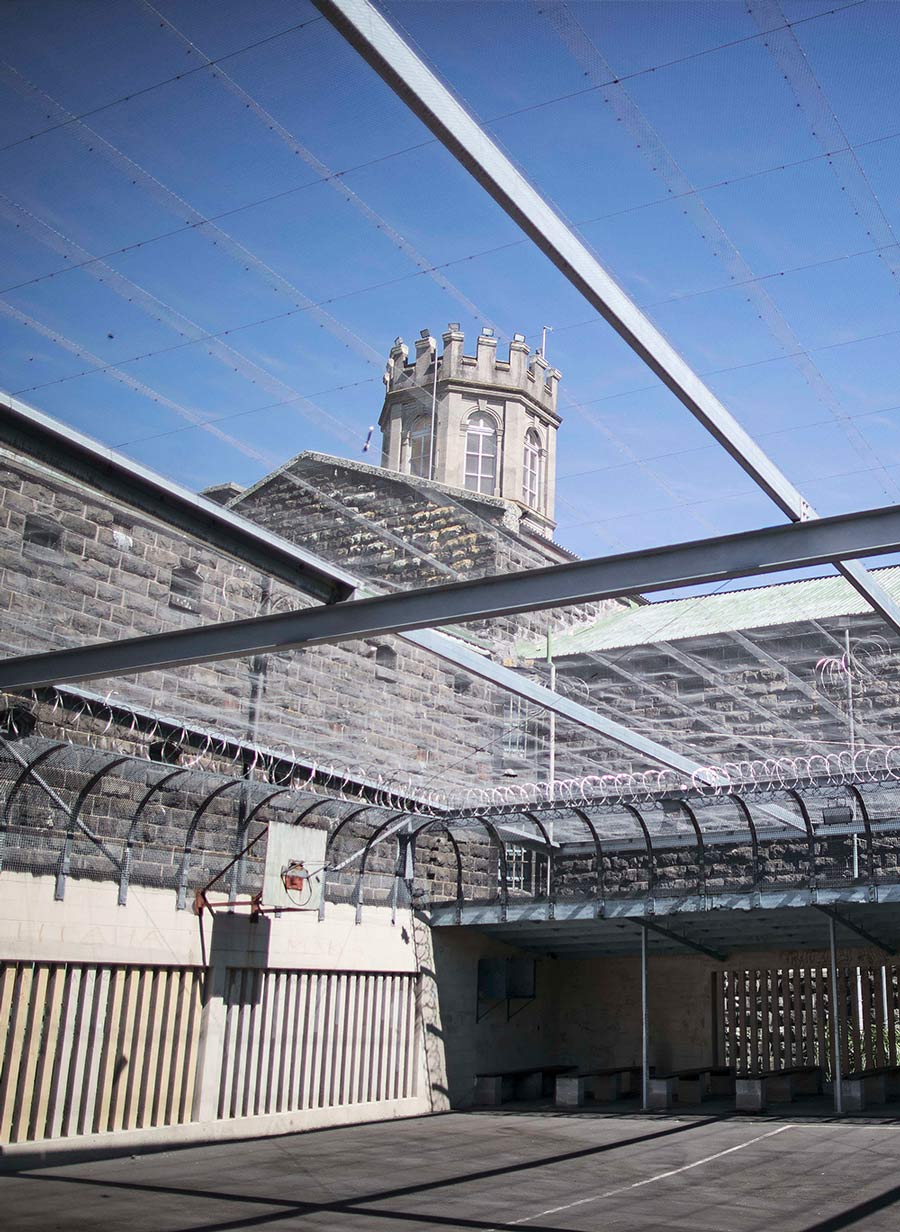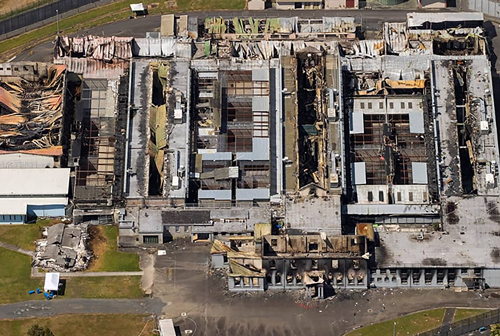

Out of sight and out of their minds
Alarming statistics reveal a mental health crisis behind bars. John Sinclair writes about the urgent need for reform and rehabilitation highlighting the struggles of both inmates and staff in a system that has been pushed to its limits.
By John Sinclair
It has never been easy to get into a New Zealand prison. By far the simplest method — commit a crime, get arrested, be refused bail — has obvious drawbacks, chiefly the requirement to stay on as a guest of His Majesty, and in accommodation which, while costing about the same as a night in a deluxe room at the Langham Hotel, lacks the premium Dream Bed and access to the fully-equipped gym and business centre. Breakfast is included, but you’ll likely be asked to share the room with another guest, one not of your own choosing.
Next easiest nowadays is to heed the calls for prison officer recruitment that appear on the back of buses and amongst the pre-feature ads in some movie theatres, and then, if accepted, spend several months learning the gentle (and the not-so-gentle) arts of making people do as they’re told, while keeping yourself safe, and (maybe) assisting someone onto the ‘pathway of excellence’ or Ara Poutama, which the Department of Corrections has adopted as its Māori name — it was the third and final part of Tāne’s hero-quest to retrieve the baskets of knowledge.
Until the Covid pandemic there were other options, some as straightforward as visiting a family member in prison, which entailed arriving on site at least 45 minutes before visiting time, with kids in tow, being x-rayed, dog-sniffed and possibly patted down, then escorted to a large room set up as best as possible for meaningful large-group family time, captured on security cameras for everyone’s safety. Alternatively, you could get inside by providing professional services to prisoners — legal, medical, dental, psychological, educational, spiritual — or, after appropriate vetting and training, joining the eclectic band of community volunteers each prison would invite inside its wires.
For a decade or so, this last was my space. I worked with adult literacy tutors, teachers of meditation, of budgeting, yoga, critical thinking skills, with musicians, volunteer librarians, ESOL teachers, beekeeping instructors, indeed any activity for which I could find competent, reliable volunteers who I could convince prison management to allow inside prison. (For full disclosure, I remain a member of the NZ Howard League for Penal Reform, though no longer an employee, and chair of the NZ Yoga Education in Prisons Trust. Views expressed here are entirely my own.)

All of this came to a crashing halt with the first lockdown, which gave the public a watered-down imitation of prison life — “lockdown” being a term used in the situation where, due to a fight, a suicide, short-staffing or a search for a missing safety razor or some other contraband, the prisoners in a cell-block, and sometimes across a whole prison site, are confined to their cells. Most seasoned volunteers had at least one experience of being deep inside a prison, having passed through a series of steel doors worthy of the opening credits of Get Smart, when a Code Blue was called (in prisons where we were issued with walkie-talkies we may even have heard the call, “Breach, breach!” come through our earpieces), and ending up locked into a room with no ability to contact the outside world for as long as it took for staff to resolve the situation, be it ten minutes or several hours. What many don’t appreciate is that, approaching three years since the end of the last (Auckland region) lockdown, and more than two years since all Covid-related restrictions ceased, prisons remain in a kind of long-Covid, and are only now re-opening their doors to external visitors, including family members, educational and vocational programmes and the ragtag bunch of volunteers. Each prison is setting its own pace, with some making good progress while others opt for an abundance of caution.
Without a doubt prison staff and management met the Covid challenge with courage and dedication, some moving out of their family homes for months on end in order to ensure that prisons in New Zealand did not suffer the same fate as many around the world, most notably in the US where more than 6,000 prisoners died alone in their cells, and were buried by their peers in exercise yards, taking around 250 prison officers with them. The swift action of Corrections staff ensured that when Covid did arrive in our prisons it was in its less deadly incarnations and few, if any, prisoners were badly affected.
Why it has nevertheless taken so long to restore normality, including in some cases merely complying with basic international norms around treatment of prisoners, appears mainly due to persistently high staff turnover and absenteeism — signs of a workforce at breaking point — not assisted by an organisational restructure that, whatever its value, saw many staff in limbo re-applying for their jobs, in temporary ‘acting’ roles or awaiting reassignment. A recent review of Christchurch Men’s Prison, for example, found that it had only 79 per cent of its custodial staff on deck, meaning many prisoner activities, including family visits, were paused, while those staff on site suffered from stress and fatigue. Many in the NGO community are concerned about what will emerge within the prison population once the tight Covid-era lid is finally unscrewed from all of our prisons, what mental and physical damage will have been piled onto what was already there, how the increased levels of stress will manifest itself, what new hurdles will have been added to what was already an obstacle course getting through prison security, navigating the labyrinth of corridors and gates, finding a sufficiently quiet space, connecting with a prisoner or assembling a group, and doing an hour or so of purposeful work.
Ara Poutama is a behemoth: a 24/7 enterprise with 18 prison sites, numerous probation offices, 10,000 staff, 9600 prisoners (a number that is trending upwards as an inevitable result of the Coalition Government’s “tougher” policies on sentencing) and 30,000 people on community-based sentences and orders (trending downwards, possibly for the same reason). Undoubtedly there is a lot of valuable work being done, innovative programmes and centres of excellence, on top of the unsung labours of simply getting the basics right most days, with some humanity added in. The Hokai Rangi strategy — a long-overdue acknowledgement that tikanga Māori and te ao Māori in general provide fundamental supports to the restorative mahi the community asks prisoners to undertake — is steadily reorienting custodial practice, and not just for prisoners who are Māori.
By definition, however, this all happens behind doors that are closed to the public, a situation exacerbated by the protracted lockdown. Even so, some information is available, and the most recent set of statistics Corrections posted on its website at the end of August should ring alarm bells. These revealed, for example, that in 2023-2024 there were 13 “unnatural deaths” in custody, making a total of 38 since the start of Covid, up from 16 in the four previous years. This includes suicides, drug overdoses, homicides and accidental deaths (the precise breakdown seems dependent upon coroner’s inquiries), and (with the possible exception of accidents) the increase indicates rising levels of distress and a reduced capacity amongst staff to respond effectively. Meanwhile assaults on staff have increased by around 80 per cent since Covid arrived, while prisoner-on-prisoner assaults have remained more or less static. Also of concern are the complaints statistics, with general prisoner complaints doubling since before Covid, allegations against staff increasing tenfold (!), and significant jumps in two recently-added categories of complaints: those relating to health care and to psychological services.
The other source of information on what’s going on behind the wire is the reporting of the Prison Inspector, Janis Adair, who has in the past year shone a critical light on lockdown practices at some units in Auckland Prison (where prisoners had only one hour outside their cells every 2 days), on the use of solitary confinement, on suicide and self-harm (partly attributed to increased use of isolation) and on the impact of low staffing levels, dilapidated facilities in some prisons and the constant and unsettling transfers of prisoners, mostly on remand, to wherever spare beds can be found.
Ms Adair also praises good practice where she finds it, and acknowledges the many factors that are outside of the control of prison staff and management. Her office is, nevertheless, part of Ara Poutama, and one wonders if her conclusions would be more forthright if, like many overseas jurisdictions, and in line with a recent call from Amnesty, hers was an independent, standalone inspectorate with the power to carry out unannounced visits.
In Budget 2024, the Coalition Government announced an additional $1.9 billion over the next triennium to increase prison capacity and to hire and train more frontline prison officers to cope with an anticipated increase in the prison muster in line with its ‘tough on crime’ approach to policing and sentencing. This will include an additional 810 beds at Waikeria Prison, near Otorohanga, in part to replace the old upper prison at Waikeria, scene of the protracted rooftop occupation and subsequent arson, by prisoners in December-January 2021. (I have never met anyone who, after visiting that facility, disputed that it was a scene of Dickensian squalor and not fit for human habitation.)
But this additional funding is no game changer. It does not represent anything beyond paying for increased capacity in our current prison system, with the public benefiting from keeping more people deemed a risk to society out of circulation for longer periods, with breakfast included. There are many who would dispute this benefit, pointing out that more and longer prison time tends to entrench criminal offending unless there is a corresponding increase in well-funded and well-designed rehabilitation, as well as paying attention to the physical and mental wellbeing of prisoners.
Those alert to the link between mental health and crime may recall that an identical sum of $1.9 billion was added to the mental health budget in 2019 in response to Te Ara Oranga (the report of the Commission of Inquiry into Mental Health and Addiction), and that part of that plan involved a purpose-built therapeutic unit at Waikeria Prison to house 100 prisoners with moderate to severe mental illness. With Covid-driven construction delays, Te Whatu Ora found it nigh on impossible to deliver additional acute mental health beds (though it appears that now at least some progress has been made, with 905 beds compared to just over 600 in 2022), and it is now likely that the Waikeria extension may not be commissioned until late 2025 at the earliest. Nor is it clear whether the mental health unit will remain part of the expansion, as finding sufficient trained clinical staff in the Waikato has proved challenging.
